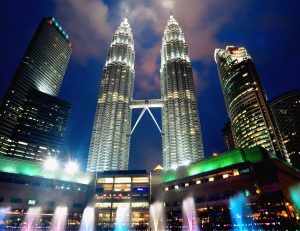2023 was a year of big economic news in Southeast Asia. Investors continued to punish tech giants, Tesla entered the Malaysian market, and countries across the region worked hard to control inflation and stabilize their currencies. As we welcome in the New Year, now seems like a good time to take a look ahead at some of the big economic stories that are likely to develop in the region in 2024.
One area everyone will undoubtedly be watching closely is clean energy. Because Southeast Asia has some of the largest and fastest growing economies in the world, and much of that growth has historically been powered by fossil fuels, the clean energy spotlight has recently turned toward countries like Indonesia, Vietnam, and Thailand. Indonesia and Vietnam both announced multi-billion dollar Just Energy Transition Partnerships, while Thailand is maneuvering to become a regional production hub for electric vehicles (EVs).
Clearly, the race is heating up to decarbonize many of the largest Southeast Asian economies. The million dollar question is what is the optimal policy for getting there. Solar power is quickly becoming the cheapest form of electricity generation, but many countries may be slow to adopt it for technical reasons (grids struggle to handle intermittent, distributed power sources like solar) or because political economic factors (like large domestic fossil fuel reserves) militate against it. Whether and how the right mix of market and non-market incentives are dialed in to accelerate clean energy transitions will be a key story to watch in 2024.
Another issue on everybody’s mind will be China-U.S. rivalry. In the economic sphere, we have already seen the Philippines pivot away from China by cancelling a series of rail projects. But the thing to keep an eye on is rising geopolitical tensions more generally and how Southeast Asian states navigate and even stand to benefit from these. In the Philippines, for instance, pivoting away from China does not automatically mean deeper economic ties with the United States.
In fact, it is Japanese development banks and multilateral lenders like the Asian Development Bank that are leading the way on funding major rail infrastructure projects in and around Manila. You see a similar trend in defense procurement, with contractors in South Korea, France, and elsewhere looking to expand their footprints in the region by offering more attractive terms (including co-production, financing, and licensing deals) than U.S. firms may be willing to offer.
To me, this is not so much a China-U.S. story. It is about how middle powers in the region are increasingly looking to leverage geopolitical competition into better development outcomes for themselves. The ways in which increasing multipolarity creates opportunities for fast growing economies in Southeast Asia to strike better bargains is something to keep an eye on in the New Year.
One final thing to watch for in 2024 is the rise of economic nationalism and how it will continue to shape patterns of trade and investment in the region. At this point it is pretty obvious that countries around the world – including the United States – are turning toward inward-looking economic policies that place domestic priorities above commitments to free trade. We are seeing supply chains wielded for geopolitical gain, and global arbiters of free trade like the World Trade Organization have become increasingly sidelined.
Indonesia has been leading the way in Southeast Asia, using export bans on nickel ore in order to force foreign investment into downstream industrialization. They have now extended the ban to other ore exports such as bauxite. Indonesia also briefly banned the export of coal and palm oil, while Malaysia stopped chicken exports in order to stave off domestic shortages. There has been talk in Vietnam of cutting back on rice exports in the future to ensure sufficient domestic supply.
In part this is a function of increasing multipolarity. With Great Power rivals competing against one another for access and influence, middle powers in Southeast Asia are seeking terms of trade that yield more tangible direct benefits for themselves, and are less willing to support a system of global free trade that promises broad gains but has sometimes failed to deliver. This trend is not likely to go away in 2024. Indeed, all signs indicate economic nationalism will be around for a while, and the way it develops in Southeast Asia over the next year will definitely be a story worth watching.

































